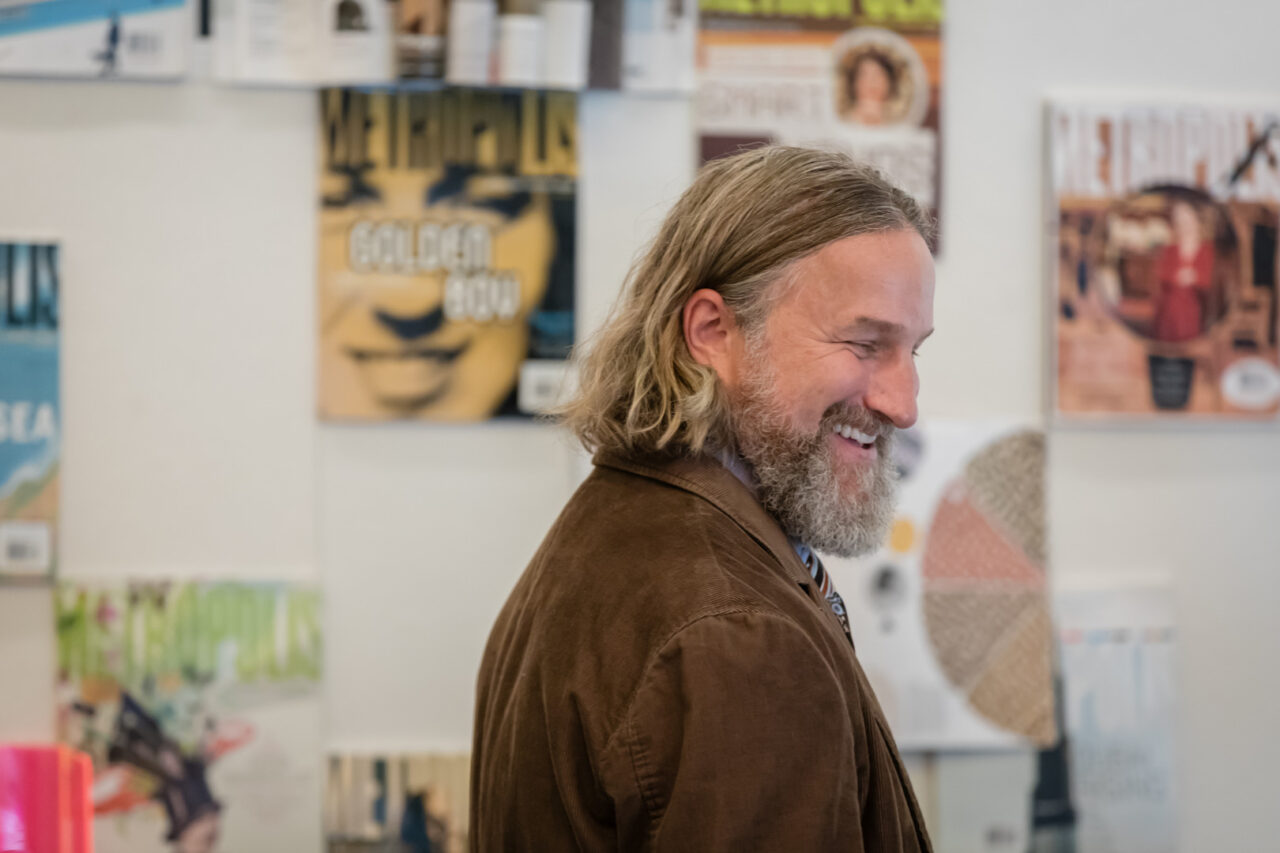Welcome to HMC Architects’ Five in Focus blog series, where we delve into the latest trends, ideas, and innovations shaping the future of architecture and design. This series is a conversation with our design professionals, inviting them to share what’s capturing their attention and offer unique insights.
Bruce Boul is the communications director at HMC Architects and a member of the AIA Committee on the Environment (COTE) communications committee. Here, he shares his insights on cutting through buzzwords, the power of storytelling, standing out, design firms as solutions firms, and defining innovation.
1. Cutting Through Buzzwords
In today’s content-saturated world, terms like ‘innovative,’ ‘sustainable,’ ‘resilient,’ and ‘state-of-the-art’ (yawn) are everywhere, often diluted by overuse. For communicators, the challenge is to cut through the noise and restore meaning to these powerful words. When we describe a building as ‘innovative’ or ‘sustainable,’ are we genuinely articulating its value?
I often wonder if we’re recycling jargon instead of communicating the distinctive impact of the work. It’s easy to rely on buzzwords, but without intention, they become empty. Instead, we must focus on the tangible ways our projects uplift communities. How does a resilience strategy benefit people in meaningful ways? How does an innovation solve real-world problems?
The key to this lies in clarity and authenticity. Clients and communities deserve more than trendy language—they deserve genuine stories and thoughtful solutions. Design is about people, and no amount of buzzwords can substitute the real impact of improving lives. It’s up to us to ensure our words reflect the true value of what we create.
2. The Power of Storytelling in Architecture
Stories captivated us as kids through fairy tales, adventures, and myths. We were swept away into worlds where every character, setting, and plot twist sparked our imagination. This same enchantment applies to architecture. Every project tells a story—whether it’s the rich history of a landmark building, the wellness narrative of a new development, or the emotional journey woven into a healthcare space.
Just as a compelling tale can transport us to another realm, architecture shapes experiences and builds relationships between people and places. As communicators, our role is to bring these narratives to life, ensuring that the designs we share resonate on a deeper, more meaningful level. It’s about inviting our audience to look beyond the structural elements and understand the human experiences these spaces create.
By merging design with storytelling, we can inspire an appreciation for a project’s aesthetic and a genuine connection to its purpose and impact on the community.

3. Standing Out in a Crowded Field.
Many architecture firms rely on the same buzzwords (see point No. 1) and phrases to promote themselves: commitment, collaboration, dedication, passion, and ‘changing the world.’ We all showcase beautifully curated images of our work—sleek renderings, expertly staged photos, and striking designs. While these are all valid, the reality is that everyone is saying the same thing. So, how do we stand out in such a competitive landscape?
Relying on generic descriptors or a portfolio of visually stunning projects is no longer enough. We need to go deeper to uncover what truly sets us apart. The key lies in articulating the ‘why’ behind what we do. Why did we approach a project in a particular way? What unique challenge did we overcome, or which community need did we meet? We begin to distinguish ourselves in these deeper narratives—stories that address our clients’ genuine concerns and aspirations.
We must demonstrate that we’re not just passionate but purpose-driven, that our work isn’t just aesthetically appealing but transformative for those who experience it. To stand out, we must go beyond industry clichés and focus on what makes us uniquely qualified to tackle complex challenges. Whether our expertise in a specific sector, our novel approach to sustainability, or our deep-rooted commitment to community engagement, we must communicate our distinctiveness clearly and meaningfully.
Ultimately, it’s not just about the spaces we design—it’s about the values we embody and how they translate into real-world impact for our clients and communities. Our point of difference lies in telling stories that no one else can tell in a way that no one else can.
4. Architecture Firms as Solutions Providers
One of the most significant shifts I’ve been reflecting on is how architecture firms are evolving from traditional building designers to comprehensive solution providers. Today, it’s no longer just about creating physical structures; it’s about addressing complex, multifaceted challenges for our clients. This evolution signals a deeper, more integrated approach. We’re not simply designing buildings—we’re crafting solutions that respond to our communities’ economic, social, and environmental needs. For example, a community + culture project might start with designing a new facility but quickly evolve into a strategic conversation about fundraising to realize the project. Similarly, a school design may go beyond classroom spaces to include resilience planning, community engagement, and tackling food insecurity.
Effectively communicating this transformation to clients is critical. It helps them see the full breadth of value we offer, even when our work doesn’t result in something as tangible as bricks and mortar. Instead, we provide strategic insights and create environments that drive innovation and enrich the human experience.
By positioning ourselves as holistic problem-solvers, we showcase how our expertise extends beyond architecture alone. We’re not just shaping the built environment—we’re partnering with clients to shape the future of their organizations, helping them adapt to emerging challenges and seize new opportunities. This expanded role will increasingly define the future of our profession, and articulating this value clearly is essential in all our client engagements.

5. Defining Innovation in Architecture
Ask ten people what innovation is, and you’ll likely get ten different answers. For some, it’s about cutting-edge technology; for others, it’s a novel approach to sustainability or community engagement. To me, true innovation is about solving problems creatively—whether through new materials, processes, or even business models. It’s not just about flashy tech; it’s about finding smarter, more effective ways to meet our clients’ needs and improve the world around us. It’s a bold term that carries significant weight, and sometimes, we need to step back and assess whether we’re genuinely pushing boundaries or refining what’s already been done. Are we creating new solutions that transform how people live, work, and interact with spaces, or are we simply following trends? As architects, claiming the title of ‘innovator’ requires continuous reflection on how we’re driving progress—not just within our projects but in how we approach every challenge.

